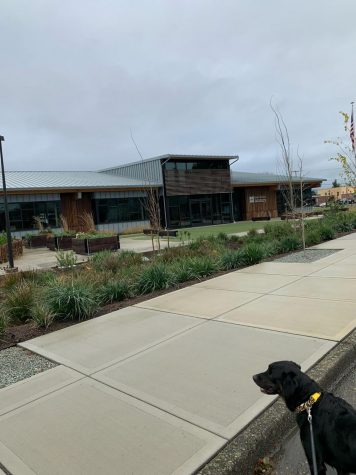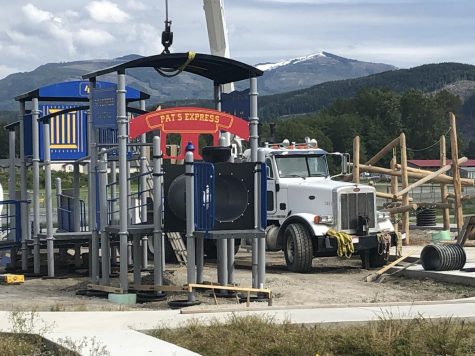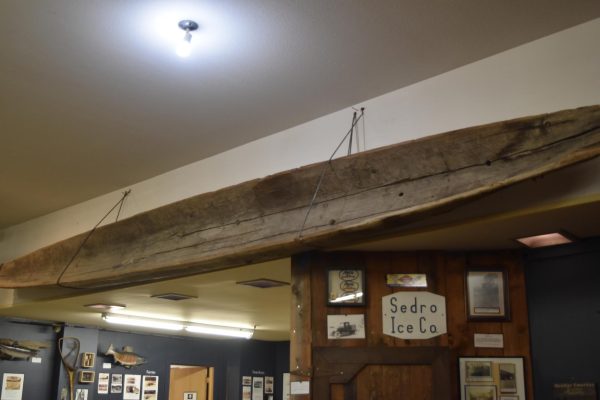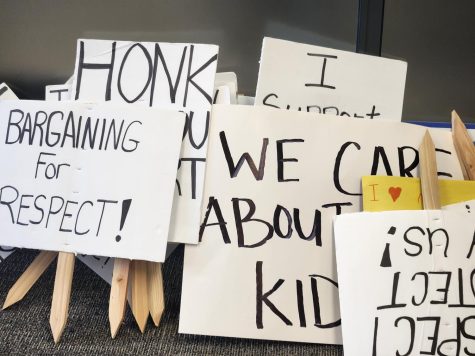Housing Crisis Comes to Sedro-Woolley

The Friendship House provides a safe enviornment for homeless in Skagit County.
WHAT’S THE PROBLEM?
The low amount of affordable housing is the number one cause of homelessness in Sedro- Woolley.
Some don’t know about the affordable housing shortage that is taking place because not everyone is directly affected by it, but for a lot of people, finding a place of shelter is a huge struggle.
“There are families that are working full-time, sometimes even two jobs, and yet cannot afford rent or house payment, let alone the first/last month rent just to get into an apartment,” said Sedro-Woolley Mayor Julia Johnson.
The lack of affordable housing can lead to people having to find housing elsewhere and having a longer commute, which can end up costing more money in the long run.
“Even if you had a good job and wanted to work, you had a car and everything and you’re ready to go, you work in Skagit County, you’d have to live somewhere else. You’d have to live in Rockport, Marblemount, Concrete,” said Sedro-Woolley Police Chief Lin Tucker.
Although fixing an issue of this magnitude takes a long time, plans are progressing. In the next couple of years, the hope is to get a lot more affordable housing built for the people in need of it.
“It is highly likely we will have 500 new living units, (apartments, townhouses, and single -family homes), within the next five to seven years,” said Johnson.
This is not just a problem for Sedro-Woolley, but for the whole state. According to Business Insider, Washington State is ranked seventh highest for housing prices in the nation with an average of $425,000 per house.
“The lack of affordable housing impacts not just our city but the entire county and state,” said Johnson.
HOUSING AND HOMELESSNESS GO HAND IN HAND
The complex issue of housing costs directly correlates to homelessness. A lack of housing is the leading cause of homelessness in Skagit County.
“In Skagit County, 37 percent of all households pay more than they can afford for housing. This translates to approximately 18,000 households and an average of 44,000 individuals,” according to a report from the Skagit County Department of Resources.
“Two of the biggest drivers of homelessness in Skagit County include the lack of diverse housing options, especially affordable housing for low-to moderate-income families, and extremely low vacancy rates for all housing types,” said the report.
This housing shortage is affecting entire families, and Sedro-Woolley High School has seen a recent awareness of student homelessness as well.
“There is a huge link between family homelessness and unaccompanied youth homelessness. And since the number one cause of homelessness is a lack of affordable housing, there’s a big link there,” said SWHS counselor Steven Gunderson.
When temperatures drop and housing prices rise, Sedro-Woolley sees an increase in the number of those who are homeless, many of whom are students. According to The Seattle Times, currently in Washington State over 5.6 percent of the population is homeless, 1,800 of which are families with youth.
“Students experiencing homelessness in any shape or form takes away a need that needs to be met,” said Gunderson, who is also the McKinney Vento liaison at the high school.
The Mckinney Vento Act was established in 1987 and works to prevent child homelessness and establish safe resources for students.
“The state has provided $2 million to help schools do more for students as well as create housing and services for those students,” said Casey Trupin, the Director of the Raikes Foundation, dedicated to the support and intervention into the lives of students who are homeless or at risk of becoming homeless.
“That fund, called the Homeless Student Stability Program, is available to districts that apply. In addition, the state is analyzing more and more data every year to understand who is affected and how we can do better,” said Trupin.
The housing crisis has shed more light on the life of McKinney Vento students and the harsh realities that they are faced with daily.
“The biggest thing is that homelessness doesn’t always mean living in a cardboard box or living out of your car,” said Gunderson. “Homelessness can look a lot of different ways and can add a lot of different stress in different ways to different students.”
There are times when students are just in need of food. Others are just trying to find a place to wash their clothes and take a hot shower.
“A lot of times what is a hang up is a lack of funds or lack of resources to help students and families experiencing homelessness. If you ever see a fundraiser or a drive to benefit any of these organizations, definitely contribute; it goes to good use,” said Gunderson.
WHAT IS THE COMMUNITY DOING TO HELP?
Homelessness resources have been spreading in Skagit County, thanks to the Friendship House. The Friendship House is an organization that started in Mount Vernon and has been providing for the homeless in the area.
The Friendship House has been helping the homeless since 1986, since then the Friendship House has been adding different homes and shelters in order to help the homeless.
“Each of our houses holds up to 24. We have a men’s shelter, and a women and children’s shelter,” said Tina Tate, Friendship House Executive Director.
Right now the Friendship House owns six buildings in downtown Mount Vernon and Burlington. These houses provide valuable shelter for some of the homeless population of Skagit County.
The Friendship House is able to house 58 people, but housing is just one problem facing homeless people. Being able to afford food is a financial problem for people less fortunate, but the Friendship House keeps people fed as well.
When winter hits Skagit County the Friendship House springs into action to help the homeless keep warm. Every year they set up a Winter Shelter to help the homeless, as the temperatures drop.
Friendship House has begun plans to expand into more buildings so that they can help more people and be more efficient at preventing homelessness.
“We are working with the city right now with a block grant,so we can purchase another house to do permanent housing. We would like to do more like that model because it works really well for individuals with limited incomes,” said Tate.
The Friendship House has been helping people in the community for years and there are no signs of stopping.
“The Friendship House saved my life,” said Tate.













